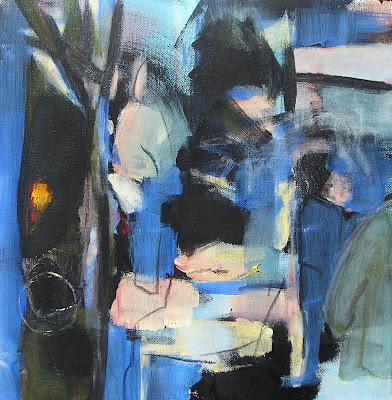 I am just figuring out that sometimes a subject can be so captivating in all its details that it becomes a stumbling block to the making of an interesting painting.
I am just figuring out that sometimes a subject can be so captivating in all its details that it becomes a stumbling block to the making of an interesting painting.In reading about his time in Morocco, it's clear that Matisse had no interest in producing a series of picturesque, ready-made scenes that might sell well back home in France. Twenty years after going he wrote, "It will probably surprise you if I tell you that I have made plans to spend several months in Paris considering that for the moment I need to concentrate and that travel, the change of climate and the excitement of new experiences, of which the picturesque is the most affecting, would lead me into too great a diversification. . ." (from Matisse, by Gilles Neret, p. 75)
It was only after he forgot all the little details that he could "remember the striking and poetic side," that drew him to the scene in the first place. "Hitherto I had been pursued by the love of accuracy which most people take for truth."
Above is the Arab Cafe, (image from Chess Theory) stripped down marvelously to shapes and lines (and those goldfish.)
Here's Zorah on the Terrace - again those fish. . .(I don't know what they signify; do you know? ).

So how do you find the essence of the image you want to paint? Lots of thinking? Less thinking, more instinctive response? Sketching? Plunging in? What about starting with nothing? I can't do it. Have to have some scraps of photos, bits and pieces of sketches, or some object in front of me.
Matisse says "If there were no model I would have nothing from which to deviate."
Here's a quick study for one I might call City People. Do you think it needs some fish?

























